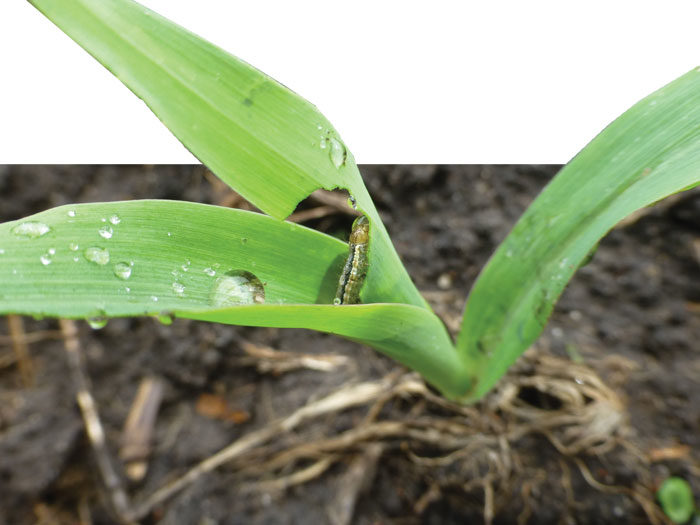No-Till Farmer
Get full access NOW to the most comprehensive, powerful and easy-to-use online resource for no-tillage practices. Just one good idea will pay for your subscription hundreds of times over.

CORN DAMAGE. Fall armyworms can damage corn plants from a young age through late season ear-filling. Chemical controls and Bt-stacked hybrids can mitigate yield losses in high infestations, but entomologists say timing is critical. Photo: Adam Sisson, Iowa State University
Mid-to-late season summer row-crop scouting in no-till and conventional fields usually finds infestations of several species of armyworms, but in some conditions, fall armyworms can become a serious problem, particularly on extremely late-planted corn.
A native to tropical regions, fall armyworms can only overwinter in south Texas and Florida, but the adults are strong fliers and are capable of long-distance travel into the northern states. Iowa State University entomologists say the pest can arrive in the Midwest in multiple migrations, with moths being driven on strong south winds of late spring and summer.
A generation takes about 30 days to complete its summer life cycle. Eggs are typically laid in masses of 100-200 on light-colored surfaces, such as utility poles, tree limbs and fence posts. The rough-looking eggs are covered with gray scales and usually hatch within 4 days of deposit. Emerging larvae go through six instars (stages of development) before pupation.
Young larvae are greenish with a dark head, while older larvae are mottled with red and brown. The determining characteristic of fall armyworms is a distinctive inverted “Y” on the head and face, along with four raised bumps in the shape of a square near the end of the abdomen. The inverted Y is the key distinction between fall armyworms and true armyworms, a different species of armyworm that typically infests wheat and oats in spring before moving to corn later in the season.
Purdue’s Integrated Pest Management (IPM) literature says economically damaging populations of fall armyworms depend…